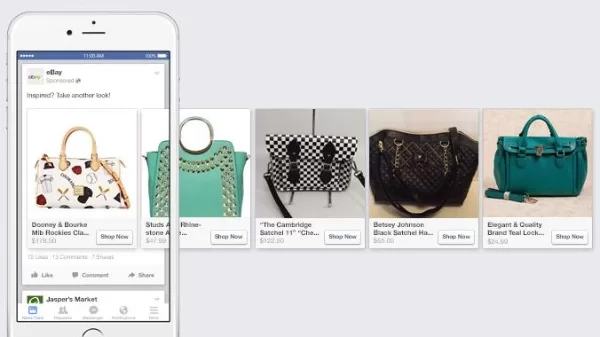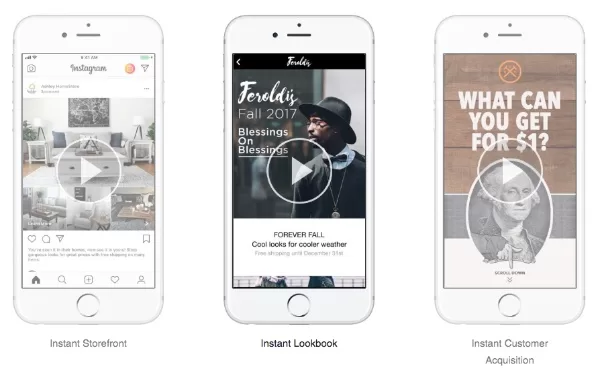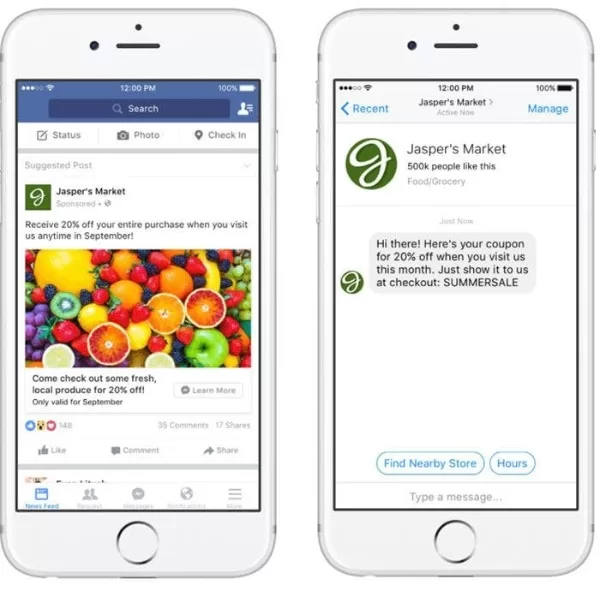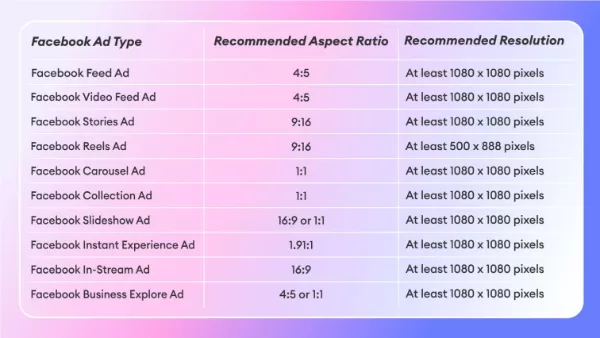Insights
Facebook Ad Formats: A Guide to Choosing the Right Type of Facebook Ads for Your Business
On Digitals
11/11/2025
38
So you’re ready to dive into Facebook advertising, but looking at all the options feels like staring at a restaurant menu in a foreign language? With Meta throwing around terms like carousel ads, Reels, and Instant Experience, it’s easy to feel a bit overwhelmed. Fortunately, understanding Facebook ad formats isn’t rocket science. It’s actually pretty straightforward once you break it down.
Let’s walk through everything you need to know about the different types of Facebook Ads so you can pick the ones that’ll actually work for your business.
What are the Main Types of Facebook Ad Formats, and When Should I Use Them?
Before we jump into the nitty-gritty details, let’s talk about what’s actually available on the Meta platform. Facebook gives you a pretty decent toolkit to work with, and each format has its own strengths and weaknesses.
Image Ads (Photo Ads) – The Standard Workhorse
Image ads are exactly what they sound like: a single photo with some text. Simple, clean, effective. These are probably the easiest Facebook ad formats to create. Just grab a high-quality image that tells your story, write some compelling copy, and you’re good to go.
Image ads are perfect when you need to get something out there fast. Maybe you’re running a quick promotion, retargeting people who visited your site, or just want to build brand awareness without overthinking it. They work great for driving immediate traffic when you have one clear message to communicate.
The beauty of photo ads is in their simplicity. They load quickly, work across all placements, and don’t require people to stop scrolling for 15 seconds to get your message.
Facebook accepts image ads in aspect ratios ranging from 1.91:1 (landscape) all the way to 4:5 (vertical). Stick with JPG or PNG formats. The recommended size is 1080 x 1080 pixels or 1440 x 1800 pixels for that crisp, professional look that won’t get pixelated or stretched weirdly across different placements.

Image ads are the most basic yet effective option
Video Ads and Reels – Leveraging the Power of Motion
They catch attention, tell better stories, and when you nail them, they absolutely crush it on engagement. Video has this unique ability to pull people into your brand story. You can show your product in action, share customer testimonials, or just create something entertaining that makes people stop scrolling. Studies show that well-executed video ads often deliver better ROI than static images.
The Facebook Ads video format comes in a few flavors:
- In-Feed Video Ads are your standard video posts that show up while people scroll through their feed. These can be anywhere from a few seconds to several minutes long (though shorter is usually better).
- Stories Ads are the vertical, full-screen videos that appear between your friends’ Stories. Think of these as the quick, snappy content that feels native to how people use the platform.
- Reels Ads are Facebook’s answer to TikTok. Short, entertaining, vertical videos that live in their own dedicated section. If your target audience is younger or you want to tap into the short-form video trend, this is where you want to be.
For video ad Facebook formats, you’ll typically use MP4 or MOV files. The aspect ratio depends on placement. Use 9:16 for Stories and Reels (vertical), 1:1 for Feed (square), or 16:9 for in-stream video placements. Keep your file size under 4GB and make sure your video looks good on mobile since that’s where most people will see it.

Video ads are tremendous for raising awareness and capturing attention
Carousel and Collection for Versatile Product Showcasing
Now we’re getting into the good stuff. Carousel ads are like giving your audience a mini catalog they can swipe through.
Carousel ads let you showcase 2 to 10 scrollable images or videos in a single ad. Each card can have its own headline, description, and link. It’s incredibly versatile.
When should you use the Facebook carousel ad formats? They’re perfect for e-commerce businesses that want to show multiple products at once. Got a new collection? Show five different items. Selling a complex product? Use each card to highlight a different feature. Want to tell a story? Break it into sequential parts that people swipe through.
The standard 1:1 (square) aspect ratio works best for carousel ads because it displays consistently across all cards. Aim for 1080 x 1080 pixels minimum resolution.
Collection ads take it up another notch. These are mobile-only powerhouses designed specifically for selling. You get a hero image or video at the top, with a product catalog displayed underneath. When someone taps your ad, they get an immersive, full-screen experience where they can browse and buy without ever leaving Facebook.
Think of meta carousel ads and Collection ads as your mobile storefront. They’re conversion machines when used correctly.

E-commerce businesses on Facebook will benefit from carousel ads
Instant Experience and Lead Ads for an Immersive Experience
Instant Experience (which used to be called canvas ads) is basically a mini landing page that lives inside Facebook. It loads fast, looks gorgeous, and keeps people engaged without forcing them to leave the app.
When someone taps your ad, boom, they get this full-screen, highly interactive experience. You can combine videos, photos, carousel elements, and text all in one smooth package. It’s perfect for brands that want to tell a richer story without worrying about slow website loading times killing their conversions.
Lead Ads are for when you want to collect information without making people jump through hoops. These ads use pre-filled forms that pull data from Facebook profiles, so people can sign up for your newsletter, download your guide, or request a quote with just a couple of taps.
If you’re running a service-based business or building a sales funnel, Lead Ads are incredibly efficient. No one wants to type their email address on a phone keyboard if they don’t have to.

Instant Experience ads make up the new method to get viewers hooked
Messenger Ads Fostering Direct Connection and Conversational Ads
Messenger ads are a bit different from the rest. These either appear in the Messenger inbox or open a direct chat when someone clicks them.
When someone clicks your Messenger ad, you’re starting a one-on-one conversation. That’s incredibly valuable for customer service, answering sales questions immediately, or just moving people further down your funnel with real (or automated) interaction.
They’re particularly effective when you want that human touch or need to handle complex inquiries that can’t be solved with a simple landing page.

Messenger ads allow the brands to foster close interactions with their users
How Do I Pick the Best Facebook Ad Formats for My Campaign Goal?
Okay, so you know what’s available. But which one should you actually use?
Matching Formats to the Funnel Stage (Awareness, Consideration, Conversion)
Different types of Facebook ad format work better at different stages of your customer journey.
At the Awareness stage, you want something quick and attention-grabbing. Image ads work great here. Simple Video ads and Reels are also perfect because you’re just trying to get on people’s radar. You’re not asking for much, just introducing yourself.
During the Consideration stage, you want to give people more information. This is where detailed facebook formats like Carousel ads shine. Show them different features, explain how your product works, use the facebook ads video format to demonstrate value. People are interested but not sold yet, so give them substance.
For the Conversion stage, you need formats that make buying or signing up as easy as possible. Collection Ads are incredible for e-commerce because people can browse and purchase right there. Lead Ads work beautifully for service businesses because the friction is almost zero. Messenger Ads can seal the deal for higher-ticket items where people have questions.
The E-commerce Advantage: Why Carousel and Collection Ads Reign Supreme in Vietnam?
If you’re running an online store in Vietnam, meta carousel ads and Collection ads should be your best friends.
Why? Because Vietnamese consumers love visual shopping experiences. The ability to see multiple products at once, compare options, and browse without leaving the platform matches perfectly with how people here like to shop online.
A single image might show one product, but what if someone doesn’t love that specific color or style? With carousel ads, you can show five different options, increasing the chance that something catches their eye. It’s like the difference between showing someone one shirt or showing them your entire new collection.
Collection ads take this even further by creating that instant storefront experience. For businesses selling fashion, electronics, home goods, or really any physical products, these dynamic meta ad formats consistently outperform basic image ads.
Utilizing Meta Ad Formats and Specs for Placement Consistency
Here’s something that trips people up: modern Meta campaigns are smart enough to automatically adapt your ads across different placements. Your video might show up in Feed, Stories, and even on the Audience Network, all from one campaign.
The key is creating assets that work across placements. That 9:16 vertical video you made for Stories? Facebook ad formats can sometimes adapt it for Feed, but it might not look great. Better to plan ahead and create assets in multiple aspect ratios, or at least design with the most important placement in mind.
Pro tip: Always preview how your ads will look across different placements before launching. You’d be surprised how often an ad that looks perfect in Feed gets weirdly cropped in Stories because someone forgot to check.

When to pick which Facebook ad formats to use
Crucial Technical Specifications and Ad Creative Tips for Every Format
Alright, let’s get into the technical stuff that’ll save you from getting your ads rejected or looking unprofessional.
Image Ratios and Text Limits
Facebook used to have this strict 20% text rule where they’d reject your ad if more than 20% of your image contained text. They’ve relaxed that somewhat, but here’s the deal: ads with less text in the image still perform better and reach more people.
For image dimensions, you want to know these key ratios:
- 1.91:1 for link posts (landscape)
- 1:1 for Carousel ads and most Feed placements (square)
- 4:5 for mobile-optimized Feed ads (vertical)
- 9:16 for Stories and Reels (full vertical)
Always use high-resolution images (at least 1080 x 1080 pixels for square formats). Blurry, pixelated ads scream “amateur hour” and people scroll right past them. Also, ditch the stock photos when possible. Original photography that actually shows your product or brand always performs better than generic stock images.
Video Length and File Size Best Practices
Length matters, but not how you think. Longer isn’t better. Shorter isn’t automatically better either. It depends on placement and goal.
For Reels, keep it under 15 seconds and make it snappy. People are there for quick entertainment.
For in-stream placements (those ads that play before other videos), you get 5-15 seconds max. Use them wisely.
For Feed video ads, you have more flexibility, but most people stop watching after 3-5 seconds if you haven’t grabbed them. Front-load your most important message.
Always use vertical video (9:16) for Stories and Reels. Horizontal videos in these placements look awful and waste screen space. The file size limit is 4GB, but try to keep it smaller for faster loading. MP4 with H.264 compression is your best bet.

The technical aspect of Facebook ad formats is just as important
FAQ: Quick Answers on Facebook Ad Formats
What is the safe zone for my ad creative in Facebook Stories and Reels?
The safe zone is the area that won’t be covered by interface elements like usernames or call-to-action buttons. For the vertical 9:16 format (1080x1920px), you should avoid placing critical text or visuals in the top and bottom 150 pixels. The central safe area is generally about 1080×1420 pixels.
Which Facebook ad formats are best for a Top-of-Funnel (TOFU) awareness campaign?
Video ads and single image ads are highly effective for TOFU awareness. Video is great for dynamic, engaging storytelling, and images offer the lowest Cost Per Mille (CPM) for broad reach. The goal is to grab attention and introduce your brand to a cold audience.
For e-commerce sales, should I use a Carousel or a Collection ad?
Both are good, but Carousel ads often show a higher Conversion Rate (CR) and Return on Ad Spend (ROAS) than single image or video ads. Collection ads are designed to turn browsers into shoppers instantly by featuring multiple products that lead to a full-screen experience.
Can I use the same ad creative for both a Facebook Feed and an Instagram Story ad?
While you can, it’s not recommended for best performance. Feed ads usually use a 1:1 or 4:5 ratio with longer captions, while Instagram Story ads require a 9:16 vertical ratio with a brief, visual, and fast-paced style to suit the platform’s user behavior.
My Facebook video ad has poor reach. What are the common technical reasons?
The primary technical reasons include setting your budget or bid too low, which prevents the ad from winning auctions, or having an audience that is too narrow. Other factors are poor relevance, low ad quality, or not optimizing the campaign for the correct objective.
What is a Dynamic Ad, and what Facebook ad formats does it use?
A Dynamic Ad automatically generates personalized content for individual users based on their interests and past behavior. For example, a user who viewed a product will see an ad for that specific item. It often uses a format that pulls content from a product catalog.
Is the old “20% text rule” for Facebook ad formats for images still enforced?
No, Facebook (Meta) no longer strictly rejects ads based on the 20% text rule. However, they still advise on limiting text. Ads with a “High” amount of text will still have their reach and distribution significantly limited to maintain user experience quality.
Which provides better performance: boosting a post or creating an ad in Ads Manager?
Creating an ad in Ads Manager is superior for performance. Boosting offers limited objectives and basic targeting. Ads Manager allows for advanced targeting, comprehensive campaign objectives (like Conversions), deep reporting, and crucial A/B testing capabilities.
Final Thoughts: Your Next Steps in Mastering Facebook Ad Formats
If there is one thing to take away is that there’s no single “best” Facebook ad formats. The best format is the one that matches your goal, your audience, and your resources. If you’re new to this, begin with image ads or basic video ads. Get comfortable with the platform, learn how your audience responds, then start experimenting with more complex options.
To create something great with your Facebook advertising plans, having a capable digital marketing agency with extensive expertise. On Digitals can be the one for you with our Meta advertising services, allowing your business to approach your target audiences with efficiency and relatability in content creation and planning.
NEWEST POSTS
- Micro Influencer Marketing For Better Reach And Stronger Engagement
- How to Build Topical Authority SEO for Stronger Rankings and Trust Online
- AI Overviews SEO – Guide To Its Impacts On Search Visibility!
- AI Video Marketing: Definition And How It Works In Detail!
- AI For Market Research: Revolutionizing The Digital Age In 2025!
Read more
